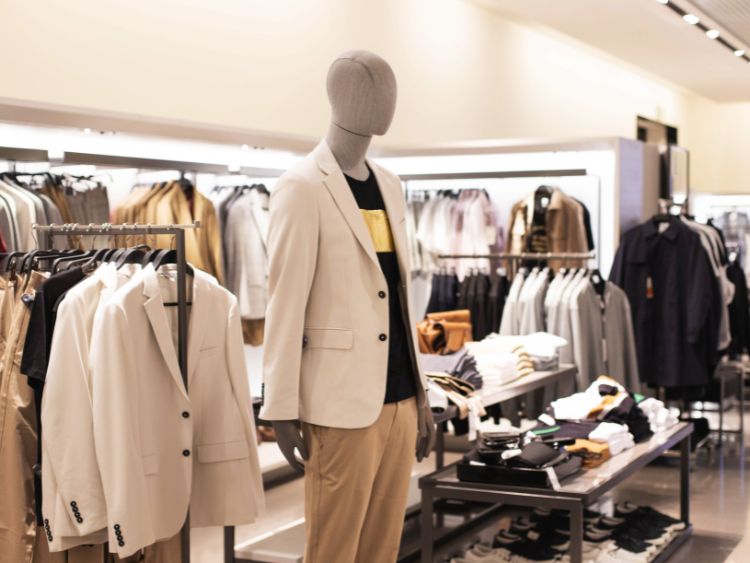Business casual” is a term that gets tossed around a lot in the workplace, but what does it really mean? For many, it’s the sweet spot between the formality of traditional business attire and the comfort of everyday casual wear. But getting it right can be tricky—too casual, and you risk looking unprofessional; too formal, and you might feel out of place. So, how do you strike that perfect balance?
In this comprehensive guide, we’ll break down the essentials of business casual attire, helping you navigate this often-confusing dress code with ease. Whether you’re dressing for a job interview, an important meeting, or just your day-to-day work life, this article will provide you with the knowledge and confidence to put your best foot forward.
What Is Business Casual?
Business casual is more than just a dress code—it’s a reflection of your professional persona. At its core, business casual is a style that is polished yet relaxed. It allows for personal expression while maintaining a level of professionalism. But the exact definition can vary depending on your workplace, industry, and even geographic location.
So, what typically falls under the umbrella of business casual? Think of it as a blend of traditional business attire with elements of casual clothing. This might include:
- Collared shirts: Polo shirts, button-downs, or blouses.
- Trousers or chinos: Avoid jeans unless specified as acceptable.
- Skirts and dresses: Knee-length or below, avoiding anything too tight or revealing.
- Blazers or cardigans: To add a touch of formality.
- Closed-toe shoes: Loafers, oxfords, or ballet flats are ideal.
The Dos and Don’ts of Business Casual
Do: Know Your Workplace
First and foremost, understanding your workplace culture is key. What’s considered business casual in a tech startup might be worlds apart from a law firm’s expectations. If you’re new to a company, don’t hesitate to ask HR or observe what your colleagues are wearing.
Don’t: Go Too Casual
One of the biggest pitfalls is leaning too far into the “casual” side of business casual. Items like graphic tees, ripped jeans, and flip-flops are generally a no-go. Always err on the side of being slightly more formal if you’re unsure.
Do: Invest in Quality Staples
Quality over quantity is the name of the game. Invest in well-made basics like a good pair of chinos, a crisp white shirt, and a versatile blazer. These items will not only last longer but will also give you that polished look business casual demands.
Don’t: Forget About Grooming
Your outfit is only part of the equation. Grooming plays a significant role in pulling off a business casual look. This means neat hair, clean nails, and subtle makeup for those who wear it. A tidy appearance complements your outfit and contributes to an overall professional image.
Business Casual for Men
For men, business casual attire typically includes:
- Shirts: Long-sleeved button-downs in solid colors or subtle patterns are always a safe bet. Polo shirts can work in less formal settings.
- Pants: Chinos or dress pants in neutral colors like navy, grey, or khaki are staples. Avoid overly bright or bold colors unless you’re sure they’re acceptable.
- Shoes: Leather loafers, oxfords, or brogues are perfect for completing the look. Ensure they’re polished and in good condition.
- Accessories: A leather belt, watch, and a simple tie can elevate your outfit. However, ties aren’t always necessary in a business casual setting, so gauge the situation accordingly.
Business Casual for Women
Women have a broader range of options when it comes to business casual, which can be both a blessing and a curse. Here are some key pieces to consider:
- Tops: Blouses, button-downs, or knit tops are great choices. You can experiment with colors and patterns, but avoid anything too flashy or revealing.
- Bottoms: Trousers, skirts, or dresses are all acceptable, as long as they adhere to the modesty guidelines typically associated with business casual. Pencil skirts, A-line skirts, or tailored pants are all good options.
- Shoes: Ballet flats, loafers, or low heels are practical and stylish. Again, closed-toe shoes are usually the norm.
- Accessories: Jewelry should be understated—think stud earrings, a simple necklace, and a classic watch. Handbags should be professional-looking and not too large.
Navigating Business Casual in Different Settings
Interviews
When dressing for a job interview, it’s better to lean more towards business than casual. A well-tailored blazer, crisp shirt, and polished shoes will help you make a positive first impression. Remember, it’s not just about looking good but also about showing respect for the opportunity.
Casual Fridays
Ah, the elusive Casual Friday—where the rules of business casual get a little looser. While jeans might be acceptable, pair them with a smart blazer or a polished shirt to keep things professional. Avoid overly casual items like sneakers or hoodies, even on Fridays.
Meetings with Clients
Meeting with clients often requires stepping up your business casual game. Opt for more formal items like a tailored suit or dress with a blazer. It’s essential to convey professionalism and trustworthiness, especially in client-facing roles.
Common Business Casual Mistakes
Wearing Wrinkled Clothes
Nothing says unprofessional like wrinkled clothing. Make sure your outfits are freshly pressed and ready to go. Investing in a good iron or steamer can make a world of difference.
Over-Accessorizing
When it comes to accessories, less is often more. Keep it simple and avoid anything too flashy or distracting. The goal is to enhance your outfit, not overshadow it.
Ignoring Fit
Fit is crucial in business casual attire. Clothes that are too tight or too loose can undermine your professional appearance. Tailoring your clothes to fit your body type is always a good idea.
FAQs About Business Casual
What should I wear for a business casual interview?
Opt for a button-down shirt with a blazer and dress pants or a skirt. Keep your shoes polished and your accessories minimal.
Are jeans ever acceptable in a business casual setting?
It depends on your workplace. Some companies allow dark, well-fitted jeans on Casual Fridays, but it’s best to check the company’s dress code first.
Can I wear sneakers in a business casual environment?
Sneakers are generally not considered business casual, but some modern workplaces may allow clean, minimalist sneakers. When in doubt, stick to more traditional footwear.
How can I make my business casual outfit stand out?
Focus on fit and quality. A well-tailored outfit with high-quality materials will always stand out. Adding a pop of color or a unique accessory can also make your outfit memorable without compromising professionalism.
Is business casual the same for men and women?
The principles are the same, but the options differ. Women generally have more flexibility in terms of clothing choices, but both men and women should aim for a polished, professional appearance.
Conclusion
Mastering the art of business casual is all about balance. It’s about finding that sweet spot where you feel comfortable and confident while still presenting yourself in a professional manner. By following the guidelines in this article, you’ll be well on your way to navigating the often-confusing world of business casual with ease.
Remember, when in doubt, err on the side of professionalism. A polished appearance not only boosts your confidence but also leaves a lasting impression on colleagues and clients alike. So go ahead, embrace the business casual dress code, and make it your own.
Authoritative Links
- https://www.entrepreneur.com/article/what-is-business-casual
- https://www.thebalancecareers.com/what-is-business-casual-2061362
- https://www.themuse.com/advice/what-does-business-casual-really-mean
- https://www.forbes.com/sites/forbeshumanresourcescouncil/2021/08/23/business-casual-explained/?sh=3e7d19b85b2d







